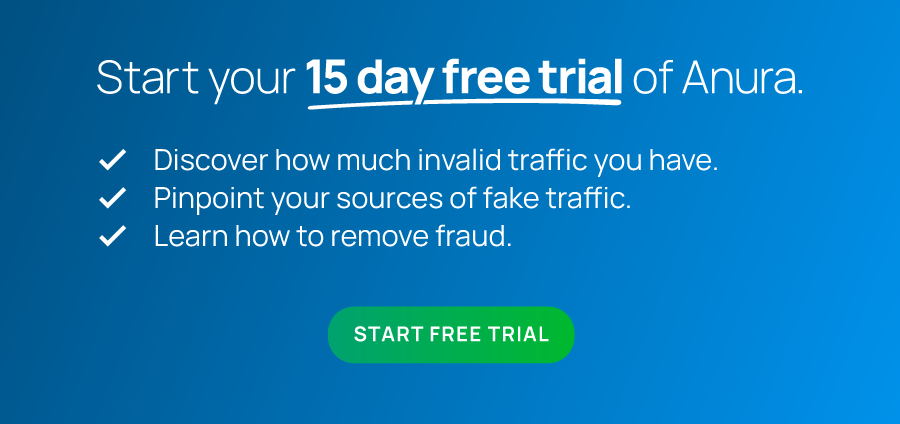Brand Safety: Are Your Ads Running on Illegal Streaming Sites?

TL;DR:
- Brand safety incidents are on the rise; 68% of brands reported at least one unsafe placement in 2024.
- Illegal streaming sites remain highly profitable, earning over $227M a year in ad revenue.
- Unsafe ads cost brands big; incidents average $340K in financial and/or reputational losses.
- AI-generated misinformation, deepfakes, and MFA sites are new brand safety risks in 2025.
- Anura helps protect ROI and reputation with real-time fraud detection and transparent reporting.
Understanding the Risk
Brand safety continues to dominate conversations whenever advertisers and agencies meet to discuss programmatic. And for good reason.
Recent data shows that 68% of brands reported at least one brand safety incident in 2024, with the average cost of each incident reaching $340,000 in lost revenue and reputational damage. On top of that, 87% of brands increased their investment in brand safety tools in 2023 to address rising threats.
It’s clear: the risks are real, and brands can’t afford to ignore them.
Why Illegal Streaming Sites are a Problem
Piracy sites aren’t just a brand safety concern; they’re also big business. By monetizing stolen content through ads, these sites siphon money away from legitimate creators while exposing advertisers to unsafe placements. And the problem isn’t going away anytime soon: Parks Associates forecasts that US streaming providers may lose a cumulative $113B by 2027 due to piracy.
Beyond lost revenue, piracy platforms are often linked to malware, phishing schemes, and other fraudulent activity. For advertisers, that means ad budgets wasted on fake or unsafe impressions, plus the added reputational risk of being associated with criminal operations.
A Brand Safety Nightmare
The issue goes beyond piracy sites. Advertisers also face:
- Fraudulent ad placements: where ads show up alongside disinformation, hate speech, or explicit content.
- Deepfake and AI-generated content: a growing area of concern as fake videos and images spread online. Google alone blocked 5.5 billion harmful ads and suspended 12.7 million advertiser accounts in 2023 for policy violations.
- Verification gaps: Some ad safety verification vendors have failed. One report revealed ads appearing next to child abuse imagery due to a vendor’s misclassification, sparking regulatory calls for tighter oversight.
All of these scenarios create reputational risks that go far beyond wasted ad dollars.
The Cost of Doing Nothing
Fraud isn’t going away; it’s adapting. Cross-industry anti-fraud standards saved advertisers an estimated $10.8B in 2023 by reducing invalid traffic. But billions more are still being lost each year to unsafe placements, bots, and opaque programmatic supply chains.
When brands fail to address brand safety, they don’t just lose money; they risk their reputation, customer trust, and long-term growth.
Related Post: Buyer Beware - Are You Getting the Ad Space You Paid For?
Protecting Programmatic Campaigns
Here’s how advertisers can better protect themselves:
- Work with trusted verification and fraud prevention providers, not just any solution.
- Demand transparency from ad networks and programmatic partners.
- Continuously monitor campaigns for abnormal traffic, suspicious placements, or brand-unsafe exposures.
- Test fraud detection tools like Anura, which provides real-time detection of bots, IVT, and unsafe traffic, so only ads reach real people.
With Anura’s advanced detection and real-time analytics, advertisers can ensure that their digital spend delivers true ROI without exposing their brand to reputational risk.
FAQs
How do my ads end up on illegal streaming sites without me knowing?
Most of the time, this happens through programmatic advertising. Programmatic exchanges use automated bidding to place ads at scale, but without the right safeguards, ads can slip onto unsafe or fraudulent sites.
What risks do advertisers face when their ads run on piracy sites?
The biggest risks include brand reputation damage, wasted ad spend, and association with criminal activity. Ads on piracy sites also create the illusion that the brand supports or endorses illegal content.
Can piracy sites expose users and advertisers to security threats?
Yes. Illegal streaming sites often carry malware, phishing schemes, and fraud farms. Ads served here may not just waste spend but could put audiences and brand trust at risk.
Is programmatic advertising safe for brand-conscious advertisers?
Yes, but only with the right protections. Advertisers should use fraud detection platforms like Anura, partner with TAG Certified vendors, and insist on supply path transparency to ensure ad placements stay brand safe.
How can I keep my brand safe while advertising at scale?
Use a real-time fraud detection solution to stop ads from serving unsafe domains, create and update blocklists, work with verified supply partners, and continually monitor campaign placements.
Are illegal streaming sites still a big issue in 2025?
Yes. Despite crackdowns. Piracy continues to thrive, especially in sports streaming, CTV/OTT apps, and cracked software sites. With billions in projected losses, advertisers need to stay vigilant.

